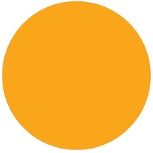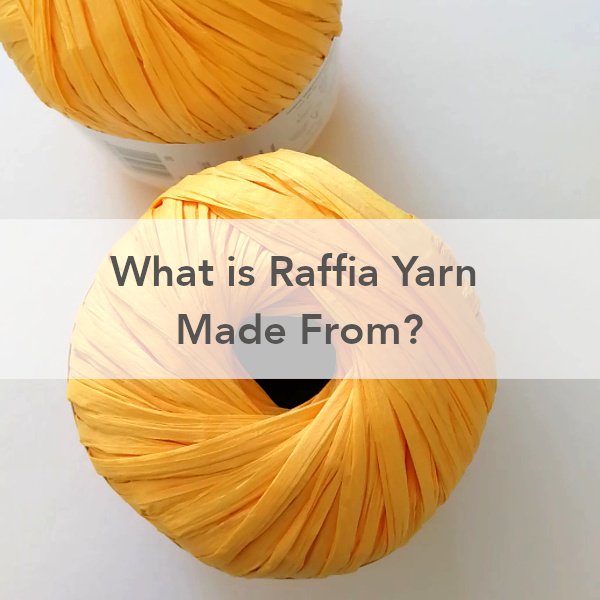Is Bamboo Yarn Eco Friendly?
The following article may contain affiliate links. This means that if you make a purchase from these links, I may receive affiliate commission at no additional cost to you. I only recommend yarns which I believe are truly sustainable and the companies who make them are following ethical textile and social practices.
It seems like this question would have an obvious answer. We all know what bamboo is; a fast, easy growing plant, so bamboo yarn must be an eco friendly option, right? Well, it’s not as simple as we might think.
So let’s discover whether bamboo yarn is actually a sustainable yarn or not. We’ll look at how it grows, the different types of processing, greenwashing and whether there are any bamboo yarns that are truly sustainable.
Photo by Nienke Witteveen on Unsplash
Bamboo as a Plant
Where is it Grown?
Bamboo naturally grows in areas that are classed as tropical, sub-tropical, or temperate. This would include places like South America, the Southeast of the US and Southeast Asia. Most of the bamboo grown for textiles is grown in China.
How Does Bamboo Benefit the Environment?
The eco friendly credentials of bamboo yarn seem to make sense when you look at the plant itself and how it benefits the environment. Here are some interesting facts:
The Fastest Growing Plant on Earth
Bamboo is actually a grass rather than a tree and, because of this, it is quick growing (3.3 feet per day/4cm per hr!) and ready to harvest in just 4 years.
It Self-Regenerates
It is a perennial plant, meaning it doesn’t need to be replanted after it has been harvested. It is self-regenerating. It continuously grows new shoots from its large root system.
Not Labour Intensive
As a perennial, it doesn’t need a lot of maintenance, labour or land cultivation to keep growing. Therefore, there are no large diesel guzzling machines to help plant seeds or till the soil.
Improves the Soil
The vast root system of the bamboo plant helps to improve the quality of the soil by holding it together and retaining water in the watershed.
Naturally Organic
Bamboo is naturally organic, just like hemp and linen, meaning it doesn’t need pesticides or fertilisers to help it grow.
Absorbs Huge Amounts of CO2
One bamboo plant can sequester 2 tonnes of carbon dioxide over 7 years. Just to put that into perspective; a pine tree will sequester just 1 ton over 40 years. That equates to about 5 times the amount of carbon dioxide than a typical hardwood tree.
Great Oxygen Producers
They can produce 35% more oxygen than trees.
Growing Practices
There are so many good things about bamboo; it has so much potential. However, there are a couple of points here to consider.
Firstly, that because the majority of it is grown in China, there is limited information about the actual growing practices.
Secondly, bamboo is now so popular, there is a huge demand and thus a pressure to continuously produce more.
So, even though the plant itself is naturally organic and doesn’t need pesticides there is no guarantee that they are not still being used in order to maximise output. It’s also difficult to know exactly how much land is being used or cleared to create more bamboo plantations and how intensively it is being harvested.
Bamboo as a Fibre
So we’ve seen that, as a plant, bamboo can be super eco friendly and even beneficial to the environment. However, when it comes to the yarn, it’s not quite the same story. Let’s look at how it’s made.
How is Bamboo Turned into Yarn?
There are two main methods in which bamboo the plant is turned into a usable fibre for yarn and textiles. The most sustainable way is called mechanical processing. Currently, the most popular method is chemical processing. Let’s look at both and what they mean.
Mechanical Processing
This process, is just like the one used for creating hemp and linen yarns. The resulting fibre is generally called Bamboo Linen and feels slightly coarser then the soft bamboo yarn that we all know. Be careful not to confuse this with bamboo linen blends of yarn.
Bamboo fibres are first crushed. Then natural enzymes are applied to break down the cell walls in order to make a usable mush. This mush allows for the mechanical combing out of the bamboo fibres which are then spun into yarn.
This is the most natural and the least damaging process for our health and our environment.
However it is labour intensive and expensive so it is rare for bamboo yarn to be made in this way.
Chemical Processing
The second and most popular way of processing bamboo yarn is by a chemical process called Hydrolysis Alkalization and then followed by multi-phase bleaching.
During this process, the leaves and woody shoots are heated in a bath of chemicals. More specifically solvents like sodium hydroxide (also known as caustic soda or lye) and carbon disulfide.
These harsh, corrosive chemicals cause two issues. They are both toxic to our health and the environment. They put textile workers at risk because they are working with them day in and out. They are also bad for the environment, because up to 50% of the hazardous waste cannot be captured and reused, so they simply end up in our waterways and in our soil.
The fibres then go through a multi-phase bleaching process and the resulting pulp is pushed through spinnerets which then forms strands of fibres than can be “spun” into yarn.
Due to this process being the most popular method, bamboo yarn is referred to as a regenerated cellulose fibre, similar to rayon and modal, because it is man made and regenerated, rather then the actual true fibres of the plant being used in their original form.
This bamboo yarn is called Bamboo Viscose or Bamboo Rayon because they are processed in a similar way.
The Good News
However, don’t worry! There is some light at the end of the tunnel.
Newer manufacturing facilities have begun using a better more eco friendly method of making bamboo yarn. The same technologies used for making Lyocell (often known as Tencel ™) to turn wood pulp into fibre can also be used to make bamboo fibres.
This method does not use the toxic chemicals mentioned above but ones that are less damaging for us and the planet. It also uses a closed loop system whereby 99% of the chemicals used are captured and used again.
This bamboo yarn is usually called Bamboo Lyocell.
Is Bamboo Yarn Greenwashed?
Taking everything we’ve learned into consideration, does that mean that bamboo yarn is not eco friendly? Is it all just greenwashing?
Unfortunately, most of the bamboo yarn that is being sold today is not eco friendly because most of it is made using the standard chemical process.
Most companies have jumped on the bandwagon of sustainabiltiy and promote bamboo yarn as an eco friendly option based on the fact that the final product is 100% biodegradable and that the plant itself is sustainable. They “forget” to mention that how it is being processed is super damaging to workers and the planet. So yes, most of the bamboo yarn sold is being greenwashed.
Also, be weary of companies that say their viscose bamboo yarn is organic without any certifications to prove this. If they are using the standard chemical process then it is pretty much impossible to be organic.
Bamboo yarn that has no certificates at all and does not state that it is mechanically processed or processed without chemicals and that it is eco friendly, is being greenwashed.
So, Is Bamboo Yarn Eco Friendly or Not?
The conclusion is that it depends. There are three types of bamboo yarn, Bamboo Linen, Bamboo Viscose and Bamboo Lyocell.
The most popular and most widely available is Bamboo Viscose which most of the time is not eco friendly. Bamboo Linen is bamboo yarn in its most true form so it is more likely to be eco friendly. Bamboo Lyocell is the newer updated version of the bamboo yarn we all love, still chemically processed but in a more sustainable way.
Which Certificates to Look out for
Before buying any bamboo yarn first check whether it is a viscose yarn or a bamboo linen or bamboo lyocell. If you find a bamboo viscose that you want to buy, be sure to check for international certifications.
More specifically GOTS. A GOTS certificate ensures that the whole process, from start to finish, follows environmentally friendly practices.
A bamboo viscose yarn with only Oeko-tex certification is not enough as Oeko-tex only certifies the final product as being non toxic and doesn’t look at the processing.
Also be aware of ISO 9000 (Quality Management) and ISO 14000 (Environmental Management) certificates as these are simply policies that the company is saying they will try to adhere to. There is no guarantee that they are actually doing so. It is just a guide for the company.
Where Can We Buy Eco Friendly Bamboo Yarn?
I’ve scoured many online yarn companies and asked loads of questions to find properly sustainable bamboo yarns to share with you. In all honesty, there aren’t many but I found two that I will confidently say are actually eco friendly.
Lion Brand Botanic Yarn - (Bamboo Lyocell)
Ganxxet Bamboo Deluxe Yarn - (GOTS Viscose Yarn)
Let me know in the comments if you have found any others that I may have missed and I will add them to the list.
Ready to start your next project? Check out some inspiring bamboo yarn crochet patterns.
Sources
[1] - Organic Clothing
[2] - Good On You
[3] - Energy Central
[4] - Textile Exchange
[5] - CDC - Agency for Toxic Substances and Disease Registry








